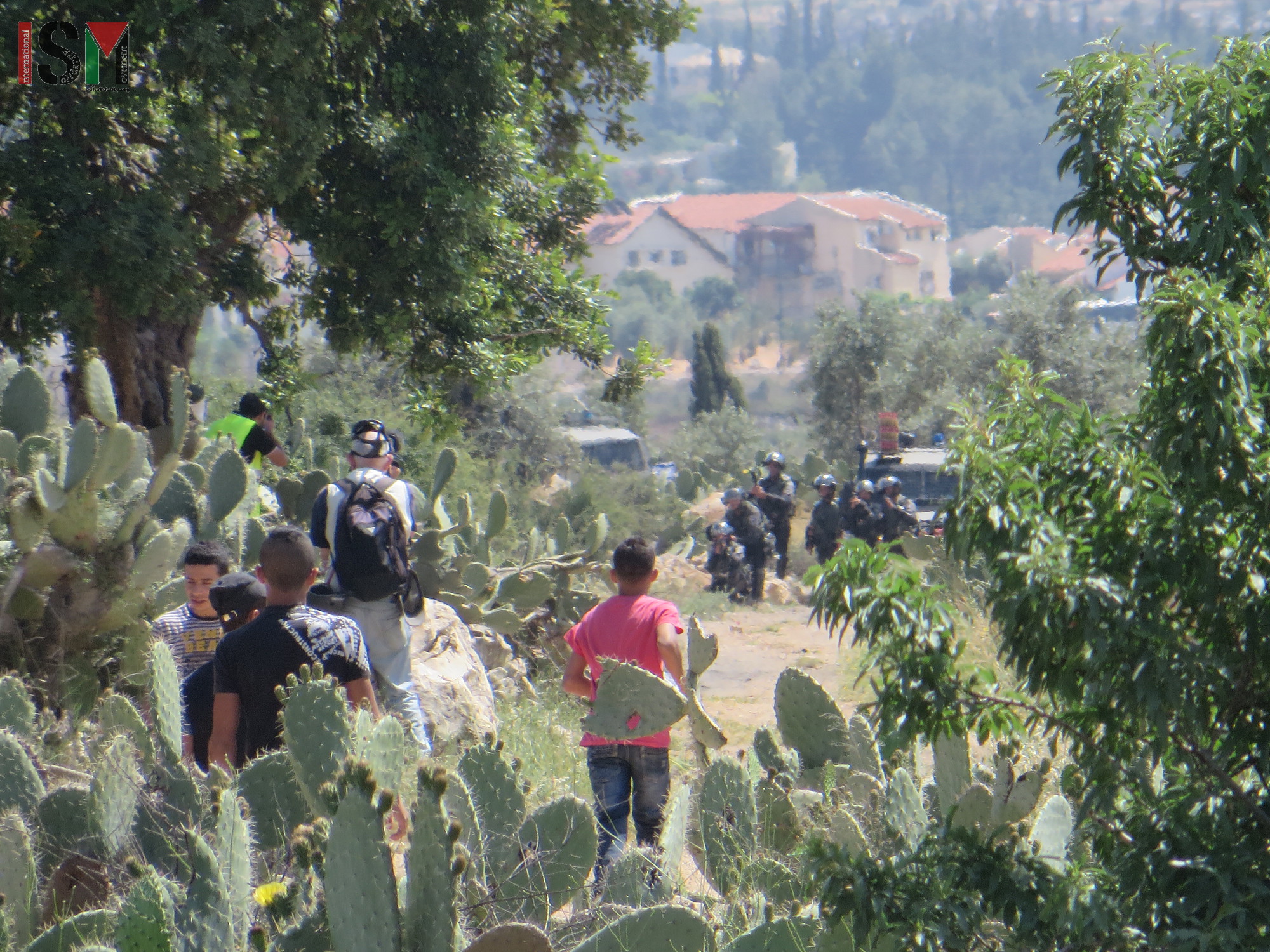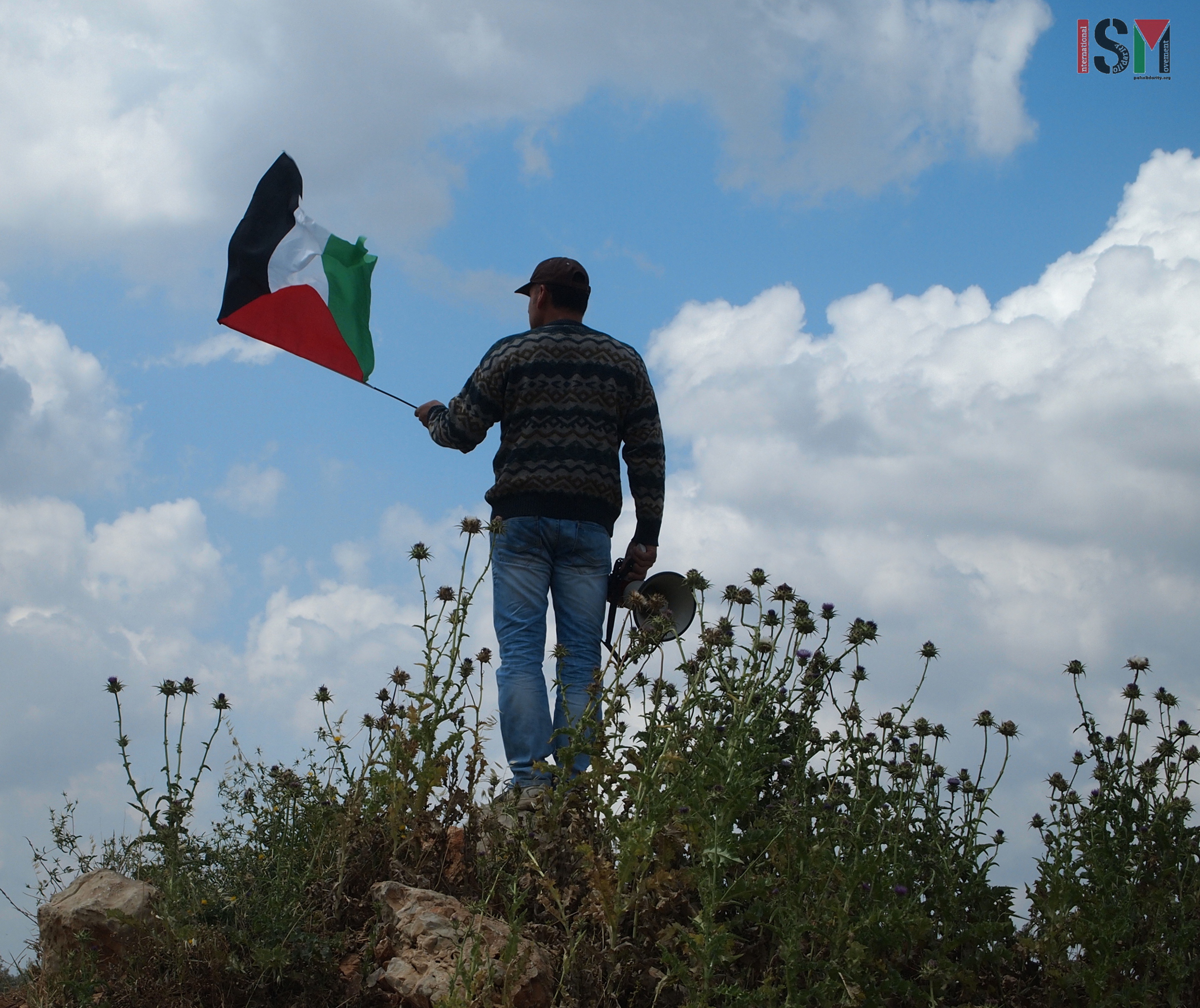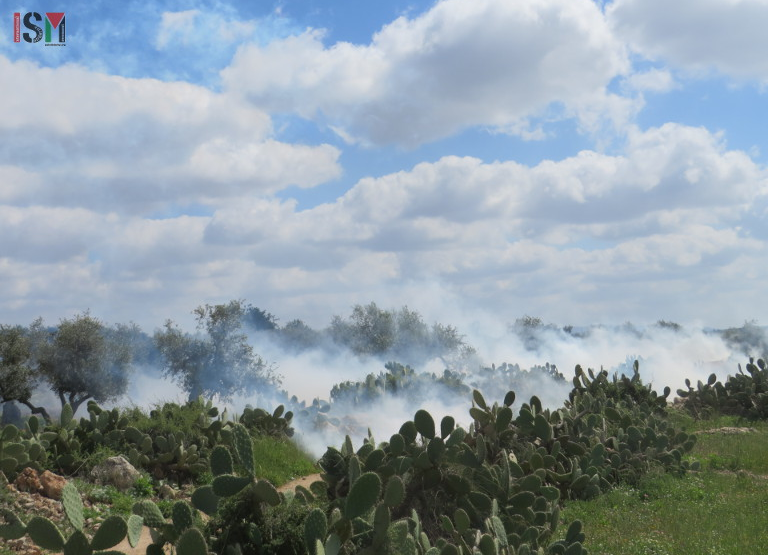Tag: Ni’lin
-
Tear gas and fire threaten Ni’lin demo
04th May 2015 | International Solidarity Movement, Khalil Team | Ni’lin, Occupied Palestine During the weekly Friday demonstration on 1st May, 2015 in the occupied West Bank village of Ni’lin, Israeli occupation forces fired more than two hundred tear gas canisters and several rubber-coated steel bullets. Tear-gas caused a fire in the fields that was…
-
Ni’lin filled with tear gas during demonstration against continued loss of land and isolation
11th April 2015 | International Solidarity Movement, Ramallah Team | Ni’lin, Occupied Palestine Israeli forces began firing tear gas and rubber-coated steel bullets even before Friday’s protest had begun, as the people of Ni’lin were gathering near the local school to begin their march against the Apartheid Wall and continued loss of land. The protest was initially…
-
Ni’lin demonstrators met with senseless violence
23th March 2015 | International Solidarity Movement, Ramallah Team | Ni’lin, Occupied Palestine On the 20th of March, during Ni’lin’s weekly Friday demonstration, Israeli occupation forces attacked protestors with about 20 rounds of tear gas canisters shot with the ‘venom’ tear gas launcher mounted on a military jeep (which can launch up to thirty rounds of tear gas…



